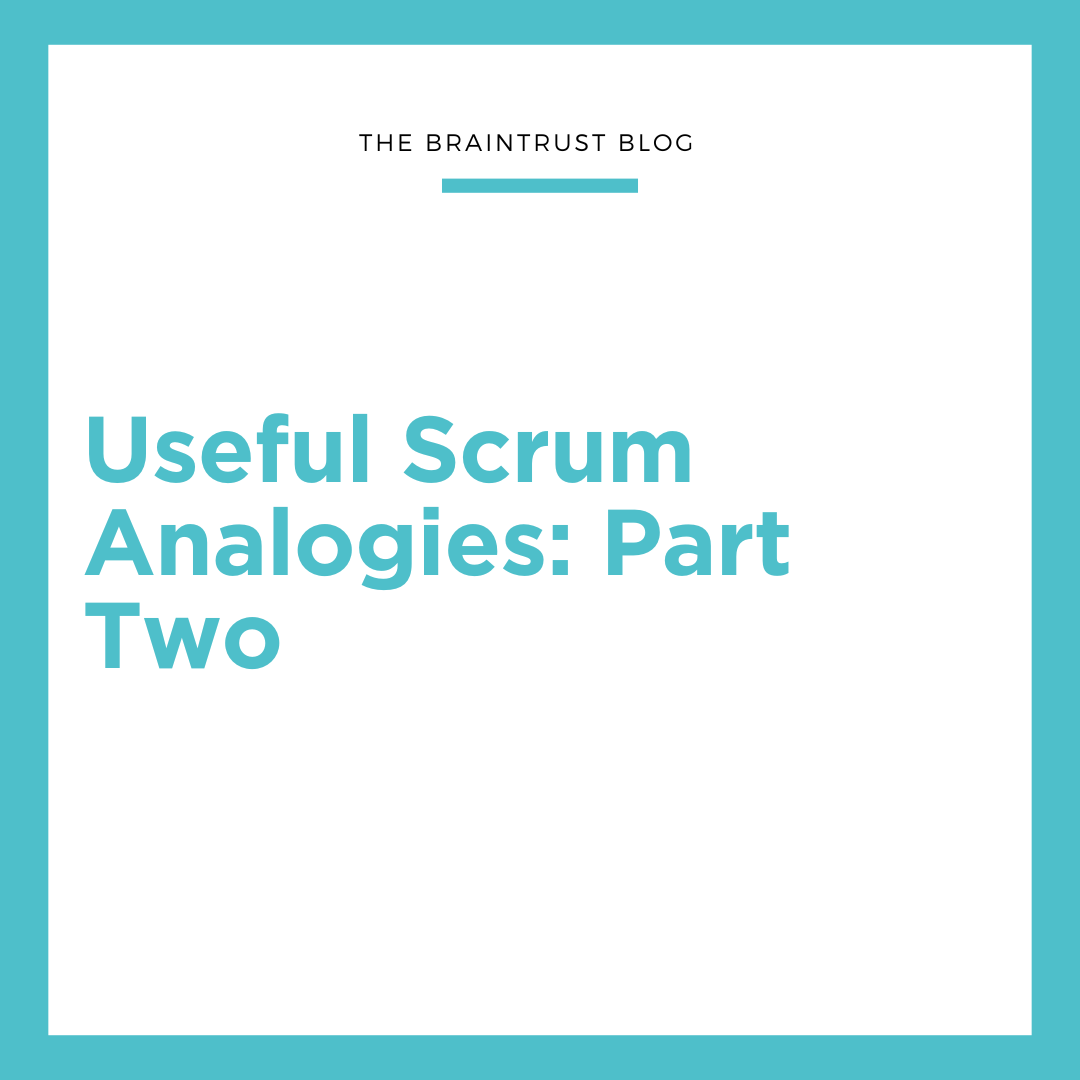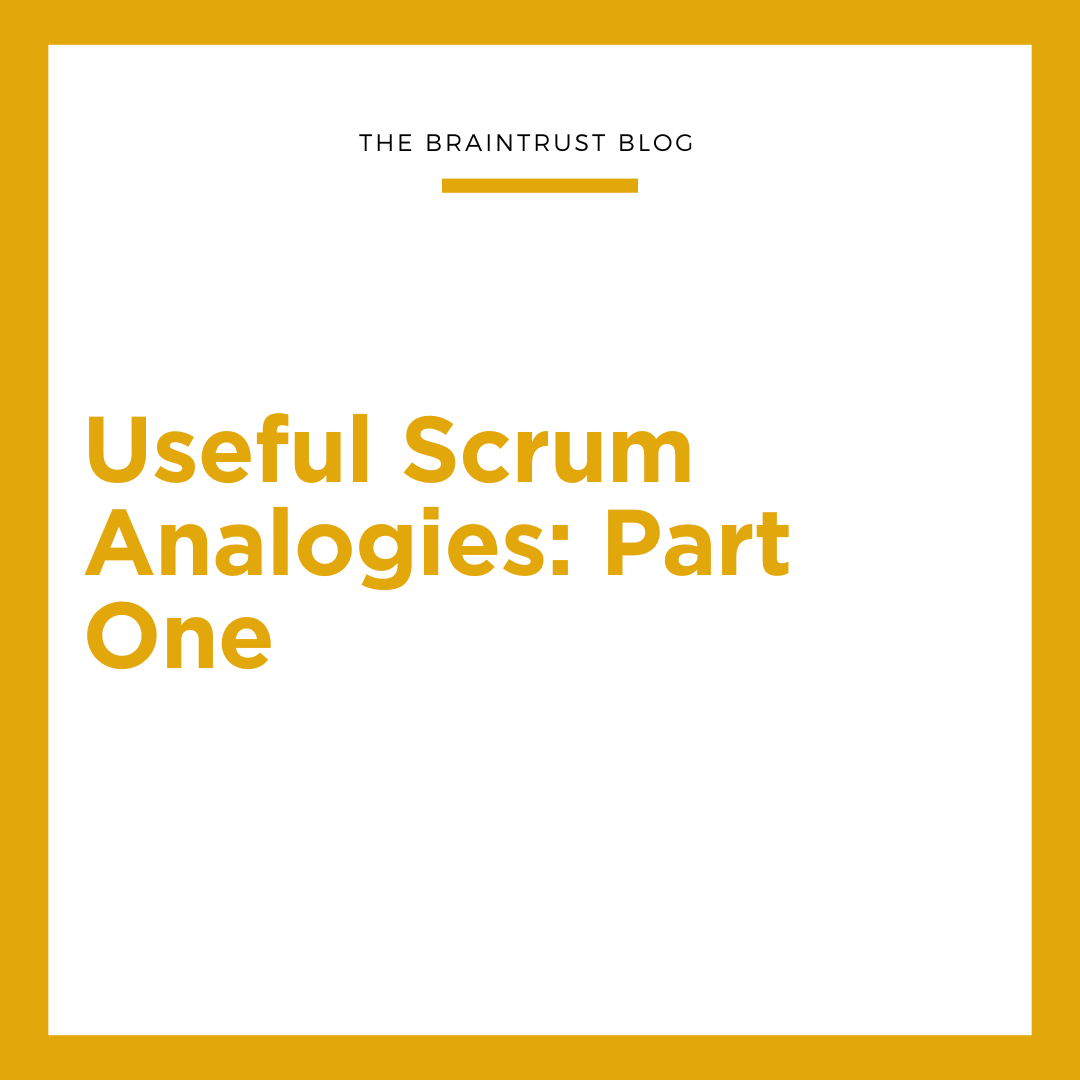At Braintrust, we like to say that Scrum is simply a collection of artifacts, roles, and ceremonies. Once you understand that list and how they work together, you can do Scrum. Today’s post gives a very brief description of what comprises each category.
Let’s start with the roles. There are three basic roles in Scrum. The heart and soul is the ScrumMaster. The rough equivalent in traditional project management is the Project Manager. If one sentence were used to sum up the duties of the ScrumMaster, it is that they facilitate the Scrum process as servant leader. A ScrumMaster also acts as an information radiator to the Stakeholders and clears roadblocks out of the team’s way.
The folks who do the real work of developing the product are the Team Members. A Sprint team is ideally comprised of 5-9 members. The three characteristics of the team is that they are self-managing, self-organizing, and cross-functional.
The Product Owner is the liaison between the Scrum Team and the customer. To the team, the Product Owner is the voice of the customer. The Product Owner has strategic oversight of the product from the team’s perspective. They are involved in product planning through visioning, road-mapping, and release planning. In general, the Product Owner works with Stakeholders and project sponsors to perform this high-level planning.
The ceremonies are the activities that make up Scrum. The first of these is the Sprint Planning Meeting. This is the meeting where the objectives of the upcoming Sprint are defined. This meeting is attended by the Product Owner, ScrumMaster, and Team Members. This is held at the beginning of each Sprint.
The Daily Stand-Up Meeting is the most granular of the Sprint ceremonies. In it, the Team Members get together, perhaps with the ScrumMaster, and each person answers three basic questions: What did you do yesterday, what are you doing today, and what are your roadblocks or obstacles. This is a very short meeting held each day of the Sprint.
The Sprint Review meeting is the culmination of the work accomplished during the Sprint. In this meeting, the team has the opportunity to demonstrate the solutions that they have developed during the Sprint. This meeting is attended by the Team Members, the ScrumMaster, the Product Owner, and the customer. This is held once at the end of each Sprint.



